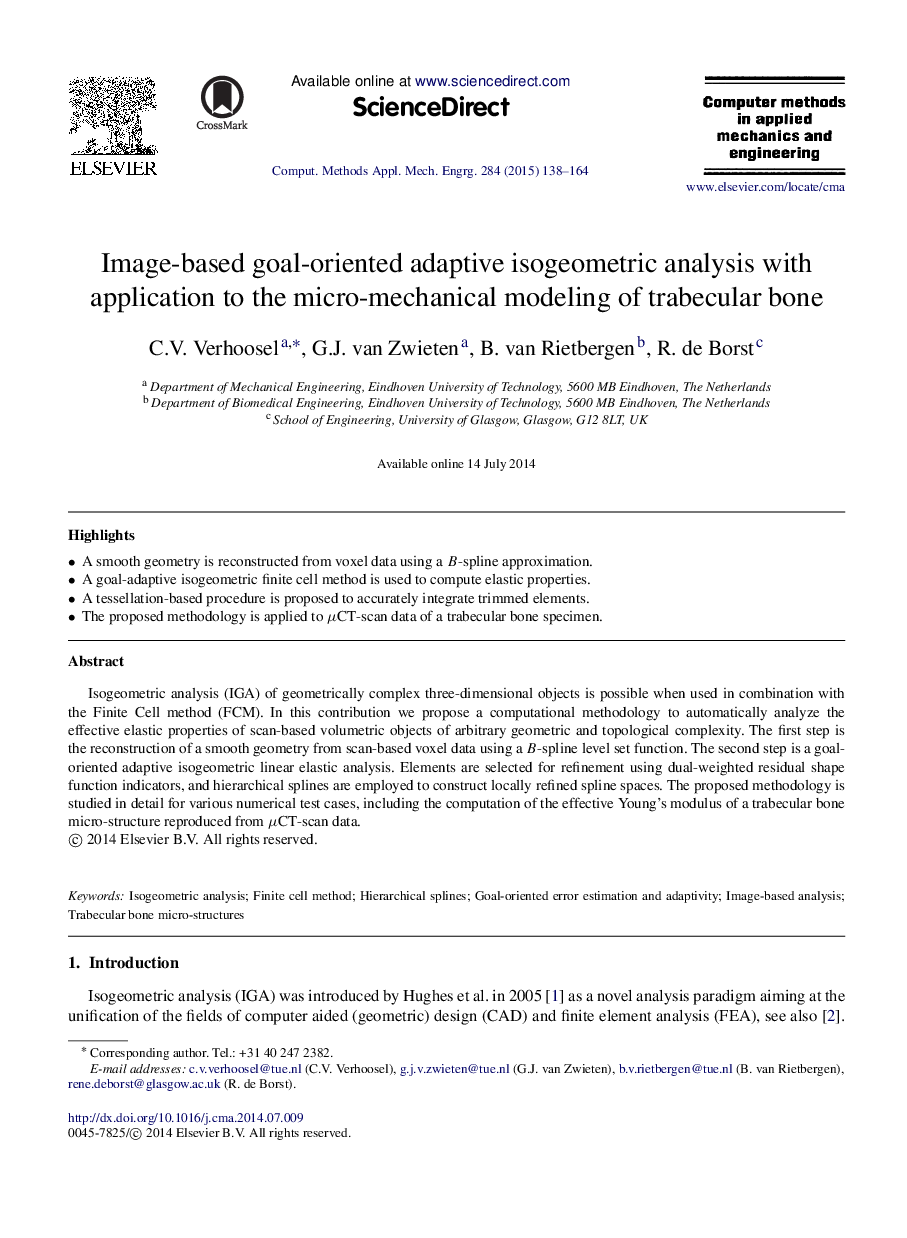| Article ID | Journal | Published Year | Pages | File Type |
|---|---|---|---|---|
| 497782 | Computer Methods in Applied Mechanics and Engineering | 2015 | 27 Pages |
•A smooth geometry is reconstructed from voxel data using a BB-spline approximation.•A goal-adaptive isogeometric finite cell method is used to compute elastic properties.•A tessellation-based procedure is proposed to accurately integrate trimmed elements.•The proposed methodology is applied to μCT-scan data of a trabecular bone specimen.
Isogeometric analysis (IGA) of geometrically complex three-dimensional objects is possible when used in combination with the Finite Cell method (FCM). In this contribution we propose a computational methodology to automatically analyze the effective elastic properties of scan-based volumetric objects of arbitrary geometric and topological complexity. The first step is the reconstruction of a smooth geometry from scan-based voxel data using a BB-spline level set function. The second step is a goal-oriented adaptive isogeometric linear elastic analysis. Elements are selected for refinement using dual-weighted residual shape function indicators, and hierarchical splines are employed to construct locally refined spline spaces. The proposed methodology is studied in detail for various numerical test cases, including the computation of the effective Young’s modulus of a trabecular bone micro-structure reproduced from μCT-scan data.
